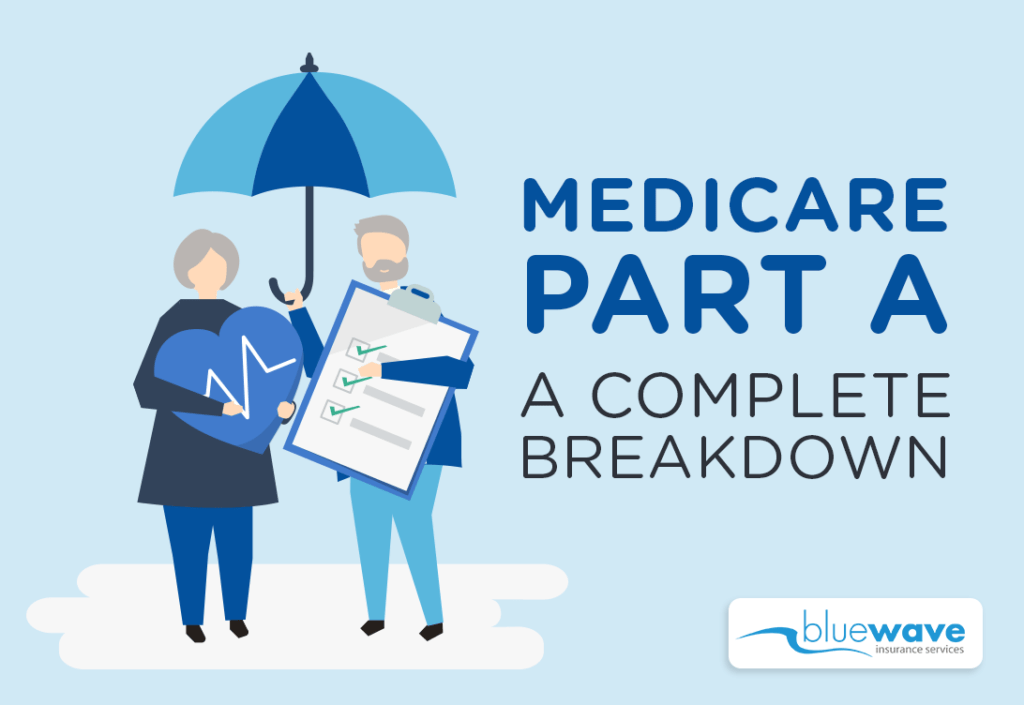
There are two main parts to medical insurance for retirement-age people in the US: Medicare Part A and Part B. Both components cover different medical expenses like hospital services, doctor’s visits, and preventative care. In this guide, we will look at Medicare Part A. More specifically, we will outline how Part A works, what it covers, and what it costs.
What is Medicare Part A and what does it cover?
Part A is just one of the two primary components of Medicare. The vast majority of US citizens aged 65 or older are eligible for Medicare Part A. As a result, it is one of the most common and vital parts of health insurance for older Americans.
Generally, Medicare Part A provides “hospital” coverage. It covers patients who require care at a medical facility (with some exceptions for home health care). However, it does not pay for every type of care.
Whether you have Original Medicare or a Medicare Advantage Plan, Part A must cover the following:
Inpatient Hospital Care
Part A only covers “essential” expenses for a patient’s inpatient hospital care. These expenses can include the cost of nursing care, medications, and general hospital services. It does not pay for expenses that fall outside of inpatient treatment. These might include non-essential toiletries, entertainment, or a private nurse (unless deemed “essential” for a patient’s care).
Hospice Care
Part A covers end-of-life treatment for terminally ill patients. To be eligible for hospice care under Part A, you must have a doctor certify that you have six months (or less) to live. Part A only covers hospice care that is focused on relieving pain and supporting comfort. It does not cover care aimed at curing a terminal illness.
Nursing Home Care
Part A only covers nursing home care if it follows an inpatient hospital visit of at least three days. Nursing home care includes a wide range of services like meals, nursing care, medication, and a semi-private room. For Part A to cover these expenses, a doctor must certify that you need daily care at a nursing home.
Home Health Care
Part A covers some essential home health care benefits, as long as they are prescribed and certified by your doctor. These benefits generally include services provided by a medical professional who visits your home to provide nursing care, physical therapy, and similar medical care. Medicare Part A does not cover any home health care that is not directly related to the treatment prescribed by your doctor.
Agent Tip
While Medicare Part A does provide some coverage, there are large deductibles and coinsurances you are responsible for. A Medicare Supplement plan would help cover these costs.
What is the difference between Medicare Part A and Part B?
Parts A and B differ in the type of care and benefits they cover. As outlined above, Medicare Part A covers Inpatient Hospital Care, Hospice Care, Nursing Home Care, and some Home Health Care.
Alternatively, Medicare Part B covers all of the following:
- Doctor’s office visits
- Ambulance services
- Durable Medical Equipment (DME) like wheelchairs and walkers
- Mental health care
- Outpatient surgery
- Lab tests and bloodwork
- Some preventative care like flu shots, cancer screenings, and nutritional therapy
Read on: The Costs Of Medicare Parts A and B
Is Medicare Part A free?
Most people who qualify for Part A are not required to pay the monthly premiums. Therefore, Medicare Part A is free for many individuals. However, to waive the monthly premiums, you must meet at least ONE of the following requirements:
65 Years or Older
- You receive Social Security or Railroad Retirement Board benefits.
- You’re eligible for Social Security or Railroad Retirement benefits but have yet to begin collecting them.
- You or your spouse paid Medicare taxes as a government employee.
Under 65 Years of Age
- You have received Social Security or Railroad Retirement Board benefits for at least two years.
- You have End-Stage Renal Disease (ESRD).
If you do not meet one of the requirements above, you will not be able to take advantage of premium-free Medicare Part A. This means that you will be required to be the monthly premium of $505 (as of 2024).
Read More: Medicare Eligibility Under 65 Explained
When Do I Sign Up For Part A?
When you first become eligible for Part A, you have a 7-month Initial Enrollment Period (IEP). For most people, this begins three months before their 65th birthday and ends three months after. If you’re getting retirement benefits, you don’t need to worry about signing up. You will automatically be enrolled in Parts A and B when you turn 65.
Even if you miss the IEP, you will still have other opportunities to enroll. If you haven’t begun collecting retirement benefits, you can enroll in Part A at the start of each calendar year. This recurring period is known as the General Enrollment Period. It begins on January 1st and ends March 31st every year.
Finally, some people may be eligible for a Special Enrollment Period (SEP). If you have a group health plan through your employer, you may be able to enroll during a SEP.
How To Sign Up For Medicare Part A
There are three common ways to sign up for Medicare Part A. Here are the easiest and most common ways to enroll:
- Go to www.SocialSecurity.gov. Click on “Medicare Enrollment” and follow the instructions to enroll.
- Call the Social Security Administration at 1-800-772-1213. You can reach a representative anytime between 7 AM and 7 PM, Monday through Friday.
- Visit your local Social Security office.
If you worked at the railroad, you can sign up for Part A by calling the Railroad Retirement Board at 1-877-772-5772. The RRB is open between 9 AM and 3:30 PM, Monday through Friday.
Conclusion
Medicare Part A is the most affordable way for most Medicare beneficiaries to receive medical treatment. Part A covers care via hospitals, hospice facilities, nursing homes, and even home health care. Most people can access the benefits of Part A for free. However, you will need to ensure that you meet the requirements to waive monthly premiums. Finally, you can easily sign up for Medicare Part A via the Social Security Administration.
If you have any questions or would like to review plans that cover the cost-sharing on Medicare Part A, call us at 800-208-4974.
